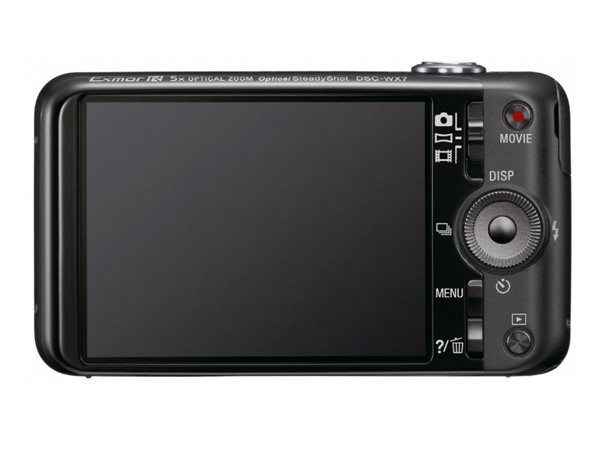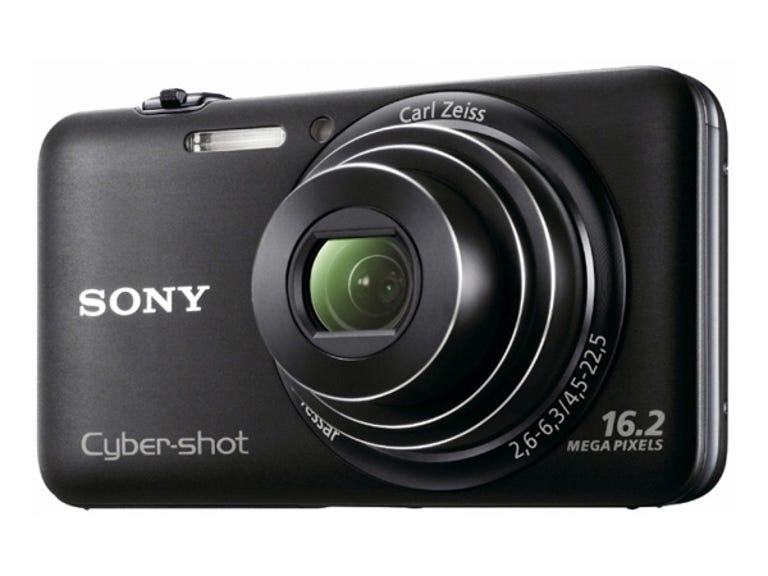 Why You Can Trust CNET
Why You Can Trust CNET Sony Cyber-shot DSC-WX7 review: Sony Cyber-shot DSC-WX7
Even though it's got a few too many megapixels for its own good, the Cyber-shot WX7 is a nifty little compact camera with an excellent set of features and a good price.
Sony's Cyber-shot models have usually always been elegantly styled, with slimline bodies incorporating reasonably attractive specs within. The WX7 is no different in this respect, and is perhaps a bit more rounded than other Sony compacts that have come before.
The Good
The Bad
The Bottom Line
Design and features
It houses a 5x optical zoom Carl Zeiss lens — a significant upgrade from the WX5, which only used Sony's G lens — at 25mm wide-angle, with a respectable maximum aperture of f/2.6. At the telephoto end the maximum aperture is only f/6.3. The WX7 also uses Sony's Exmor R CMOS sensor at 16.2 megapixels, which is supposed to deliver superior low-light performance. As is the case with the previous WX and TX cameras that have used this sensor, that claim is mostly true.
Elsewhere, the 2.8-inch LCD screen (460,000 dots) is flanked by a strip of small buttons arranged on a vertical axis, with a similarly styled control switch that changed the shooting mode from standard photos, iSweep Panorama, 3D Sweep Panorama and video recording mode. Everything is shrunken down on a very miniature scale with the WX7, with its buttons being a little too small for comfortable operation. The power button is also recessed in the top panel in such a way that makes it quite awkward to turn it on as it requires a fair amount of pressure.

The teeny tiny buttons (Credit: Sony)
The WX7 comes equipped with 33 scenes within its automatic modes that detect the subject or situation of the photograph you are trying to capture. For the most part it does an excellent job in detecting appropriate shooting conditions. The superior auto mode captures three images in quick succession (thanks to the sensor) and combines them together in-camera to achieve an optimum exposure and sharpness, particularly for scenes with tricky lighting or in low-light. For those who like to tweak a little more there is also program and intelligent automatic modes, 3D still image capture for display on 3D TVs and background defocus mode that emphasises the background blur, ideal for portraits. These are all accessed via the rotating dial next to the screen. There's also a one-touch record button that works in still image capture and movie mode — however, if you are taking still images and want to just press record to take video without changing into that mode via the switch, you need to press and hold the button for the duration of the recording. This restriction isn't in place when you are in the dedicated video mode.
Connectivity is provided via mini HDMI and the WX7 uses a Lithium-ion rechargeable battery and SD or MemoryStick Pro Duo cards. There is also a proprietary connection at the bottom of the camera used to connect it via USB, with the cable being provided in the box.
Performance
General shooting metrics (in seconds)
- Time to first shot
- Shot-to-shot time
- Shutter lag
Continuous shooting speed (longer bars indicate better performance)
The WX7 takes 10 shots in continuous mode before stopping to process them. Sony rates the battery for the WX7 at 230 shots.
Image quality
There are two schools of thought when it comes to assessing the quality of images produced by the WX7 — those who want to look at images on the camera screen, TV or small prints, and those who want to make enlargements and look at images at their full resolution on screen for cropping.
For the first category of users, the WX7 produces fantastic shots, particularly those taken with the superior auto mode that takes several shots and merges them together for the sharpest result. Colours are punchy and mostly true-to-life with a little extra emphasis in the red channel.
For the second category of users, images at 100 per cent magnification look "crunchy" and over-processed. What's frustrating is that the lens is able to resolve a lot of detail but the image processor is far too overzealous when looking at full resolution shots. The WX7 performs best when taking shots at low ISO levels which you can fortunately limit by selecting it in Program mode (the maximum ISO is 3200).
The upgrade to the Carl Zeiss lens from the WX5 has seen many improvements in sharpness, with the WX7 giving reasonably sharp images across the frame.
A 100 per cent crop (inset) from the WX7. (Credit: CBSi)
Videos from the WX7 are the best we've seen from a Sony compact camera, with excellent sharpness across the frame and only a small note of interlacing. The sound is also decent too, though the stereo microphone does pick up some wind noise. You can use the optical zoom while filming; however, as you can see in the video below, use it sparingly as it does move incredibly quickly.
Image samples
Click each image for full-sized samples from the WX7. No post-processing has been done to alter these photos. Note that some images were taken at 16:9 aspect ratio, reducing the resolution to 12 megapixels, and others were taken at 4:3 which uses the full 16.2-megapixel resolution.
Exposure: 1/80, f/10, ISO 100 | Exposure: 1/30, f/2.6, ISO 125, background defocus mode |
Exposure: 1/250, f/2.6, ISO 250 | Exposure: 1/320, f/4, ISO 100 |
Conclusion
Even though it's got a few too many megapixels for its own good, the Cyber-shot WX7 is a nifty little compact camera with an excellent set of features and a good price.


